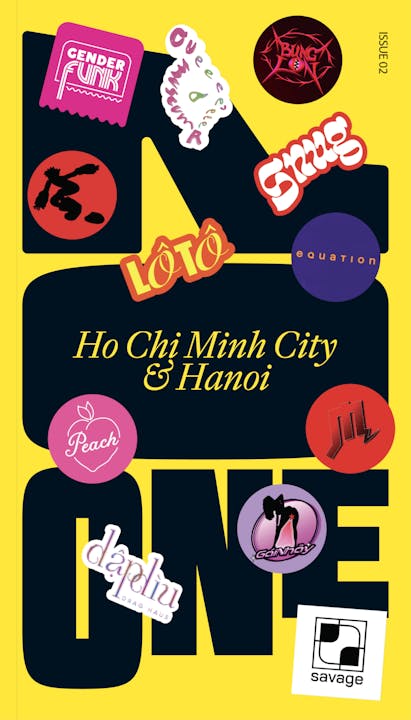Pfeil issue 12
Delivered to Stack subscribers in
Jun 2020

We love Pfeil – part literary journal, part cultural criticism, part conceptual artwork, it’s a brilliantly enigmatic magazine that seems to take joy in breaking the rules of what a printed magazine should and shouldn’t do. See, for example, the blue / grey tint that has been applied to roughly half the pages in this issue. Normally magazine makers use that sort of change to lend a sense of pace, helping to show where one story or section ends and another begins, but here the changes come thick and fast, landing apparently at random in the middle of stories and breaking down the basic divisions between pieces.
The effect is strangely giddying, encouraging the reader to run on from one piece straight into the next, and creating the sense of one overall artwork rather than a collection of individual articles. The impression of editorial holism is emphasised by thematic reflections that also seem to show one story being influenced or affected by another – see, for example, the performance art caper with Harry Gamboa Jr’s narrator losing his funding because of the 9/11 terror attacks, and which is followed by the play / poem / documentary photography showing Alice Creischer’s performance artists in action. Finishing Harry’s story and then viewing those actors standing in the street with their placards and strange costumes, I found myself thinking about how they got there: the conversations with the gallery; the funding that made it all possible; and what they all went on to do next.
The unifying theme that runs through everything here is “Economy”, with all contributors responding to that single stimulus in some way. As you’d expect, those responses are extremely diverse and don’t conform to any single message, but I found myself particularly drawn to Monika Senz’s essay, which examines our role in the digital attention economy: “Today, any artist has to act as entrepreneur… Artistic practices that stand outside of an easy-to-consume-easy-to-swallow model are less and less able to find their space and therefore legitimation to exist.” It seems to me that Pfeil provides that space, giving writers and artists an opportunity to reach readers who wouldn’t otherwise have come across their work. If you’d like to see more of that, head to montezpress.com, where you can order back issues of Pfeil and explore the other art books and periodicals also published by Montez Press.
Name
Anja Dietmann.
Job title
Editor.
What is Pfeil?
We describe Pfeil as a ‘printed exhibition’, rather than a magazine. Every issue is dedicated to a specific word, and artists are invited to make work around it.
What makes it different to the rest?
Even though we publish the magazine in English, neither myself nor most of the contributors are native English speakers. Because of this, we try to take the mother tongue of each contributor into account and adapt it into an international English for the magazine. This is only possible through the work of Stacy Skolnik, our copyeditor, and with the support of my partner Giacomo Toffanello, who speaks five languages.
Who makes Pfeil?
The contributors; Stacy Skolnik, the copyeditor; Max Prediger and Julian Mader, the graphic designers; Nadine Droste and Tobias Peper, guest editors; and me.
Who reads it?
Even though we call Pfeil Magazine a printed exhibition, it is not only made for artists. The selection of the material favours a diverse audience. We use simple language so we can be as inclusive as possible.
Why do you work in magazines?
Because of how ideas flow, and are developed both within our team and with the contributors. Also because of the possibility to create a safe space within the magazine, which I hope to pass along to our readers. When the magazine is received by someone it becomes a private object.
Aside from the print magazine, what else are you involved in?
I am a performance artist, currently producing a concept album based on my musical performance Nicorette.
What would you change about Pfeil if you could?
I would definitely pay artists fees. At the moment the budget is barely enough to cover the printing costs, fees for guest editors and translations. Visibility is not enough and work in the art world is mostly undervalued.
Where do you see Pfeil in five years?
Paying contributors — but I hope it doesn’t take five years to be able to pay artist fees.
Delivered recently by Stack
A different independent magazine delivered every month from £12. Sign up today and discover a new world of reading outside the mainstream...
Subscribe to Stack now See 17 years of magazines








